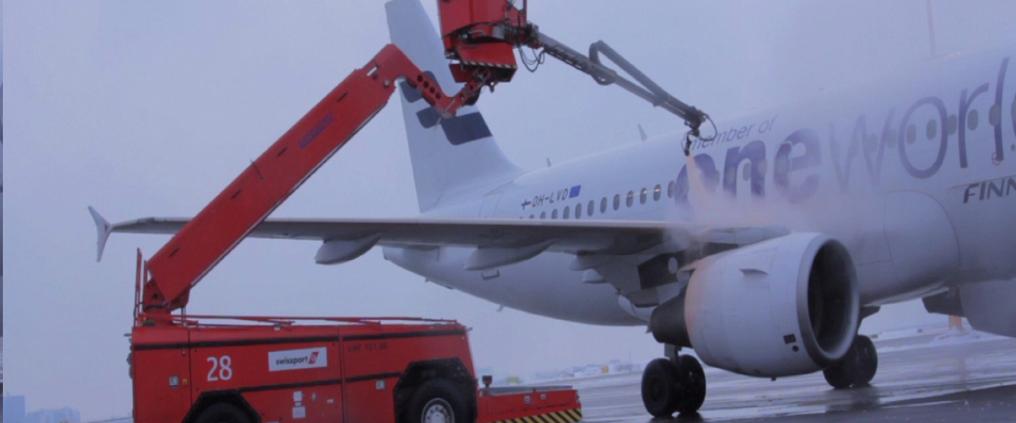De-icing is needed when wing surfaces collect impurities, such as ice, snow, or frost. This is done by spraying the wings with a mixture of glycol and water that melts the ice and snow.
'To finish off, we spray the wings with a different glycol and water mixture, and then the aeroplane is ready for take-off', says Unit Supervisor Mika Järvinen from Finavia.
Three companies specialised in de-icing operate at Helsinki Airport, and airlines order their services from them.
De-icing is usually the last step before an aeroplane takes off. The decision on whether to use de-icing or not is always made by the captain of the aircraft.
Top-level winter expertise
A special feature of Finland is the amount of de-icing carried out: every year thousands of aircraft are washed of snow and frost.
'This has enabled us to garner a unique wealth of experience and ensured our expertise in winter weather conditions is first rate', continues Mika Järvinen.
During the last five years, Finavia has invested significantly in developing its de-icing functions and related infrastructure. For example, the estimated building costs for Helsinki Airport's new de-icing area were 13.6 million euro.
Thinking of the environment
Finavia has created a specific environmental strategy regarding de-icing. It was completed in 2013 and its aim is to minimise the environmental impact of de-icing and anti-freeze agents used on aeroplanes.
Helsinki Airport has two centralised de-icing areas where glycol fluids are collected for further processing.
As always, environmental considerations and solutions based on sustainable development are key principles for Finavia in all things related to de-icing as well.



